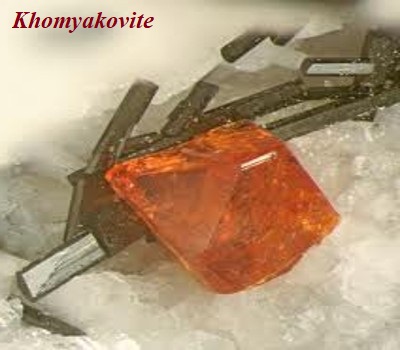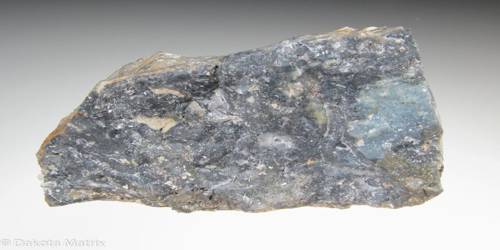Khomyakovite is an exceedingly rare mineral of the eudialyte group, with formula Na12Sr3Ca6Fe3Zr3WSi(Si9O27)2(Si3O9)2O(O,OH,H2O)3(OH,Cl)2. It is a mineral containing calcium, chlorine, hydrogen, iron, oxygen, silicon, sodium, strontium, tungsten, and zirconium. The original formula was extended to show the presence of both the cyclic silicate groups and M4-site silicon, according to the nomenclature of the eudialyte group. Some niobium substitutes for tungsten in khomyakovite.
General Information
- Category: Silicate mineral, Cyclosilicate
- Formula: Na12Sr3Ca6Fe3Zr3WSi(Si9O27)2(Si3O9)2O(O,OH,H2O)3(OH,Cl)2
- Crystal system: Trigonal
- Crystal class: Ditrigonal pyramidal (3m)

Properties
Khomyakovite is an iron-analogue of manganokhomyakovite, the second mineral being a bit more common. The two minerals are the only group representatives, besides taseqite, with species-defining strontium, although many other members display stronium diadochy. Khomyakovite is the third eudialyte-group mineral with essential tungsten.
- Color: Orange to orange-red
- Crystal habit: aggregates (anhedral to subhedral)
- Fracture: Uneven
- Tenacity: Brittle
- Mohs scale hardness: 5-6
- Luster: Vitreous
- Streak: White
- Diaphaneity: Transparent to translucent
- Density: 3.14 (calculated)
Occurrence and association
Khomyakovite, manganokhomyakovite, johnsenite-(Ce) and oneillite are four eudialyte-group minerals with type locality in Mont Saint-Hilaire, Quebec, Canada. Khomyakovite itself is associated with analcime, annite, natrolite, titanite, calcite, and pyrite.
Information Source:
















